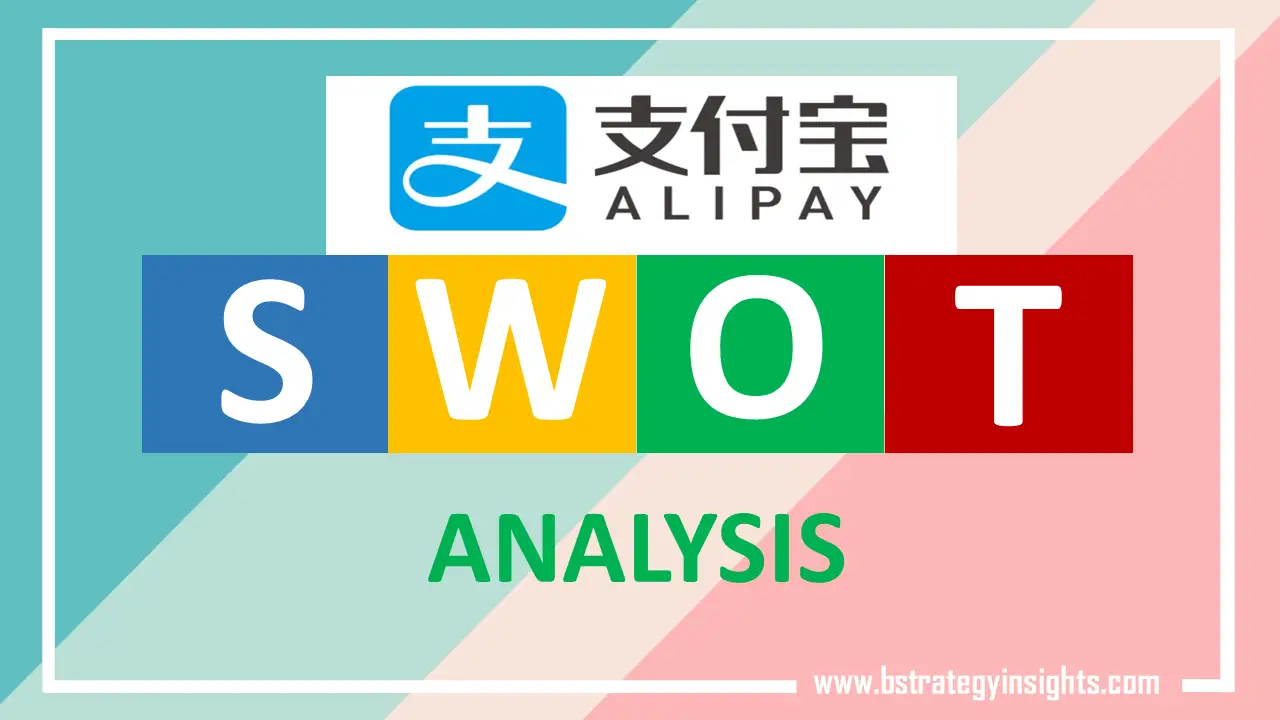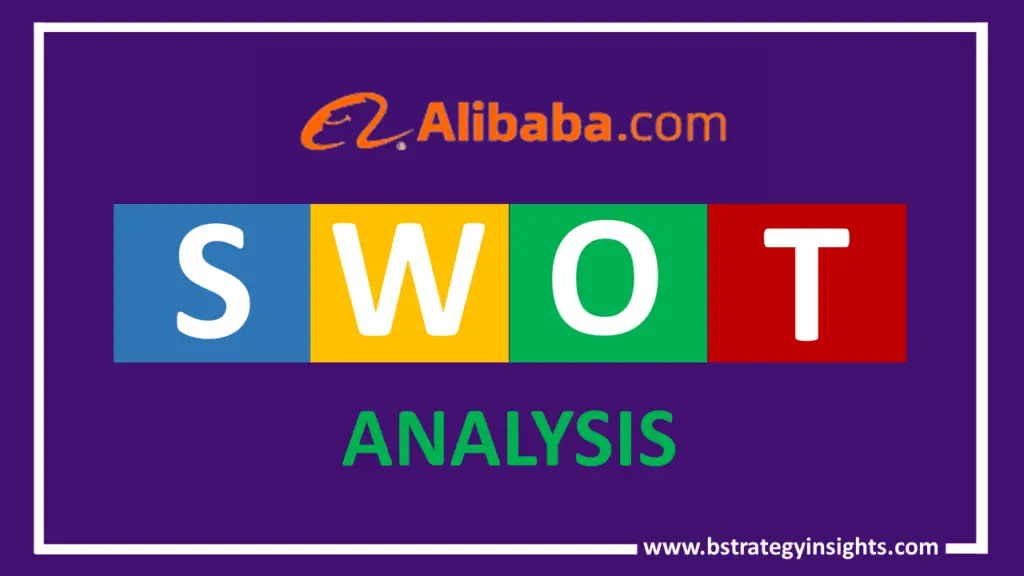
SWOT analysis is a business tool that Alipay needs to assess its current market position to help inform its business strategy. SWOT analyses the company’s strengths, weaknesses, opportunities, and threats. It gives a clearer understanding of the company’s internal and external critical factors that have a critical bearing on the ability of an organization to succeed in the market.
SWOT will enable Alipay to make the most of what they’ve got for the company’s advantage and identify the company’s opportunities to take advantage of and enhance its profitability. The company can also reduce its chances of failure by understanding its weaknesses and eliminating threats by analyzing its external environment. These are critical for Alipay’s successful market strategy. SWOT analysis
Alipay is a professional financial service platform. It is a third-party mobile and online payment platform that Alibaba owns. The platform brings together world customers and businesses together. It offers real-time payment solutions to Chinese buyers who buy products online from merchants and make their RMB payments. Alipay deducts such payments from the particular buyer’s account in real-time. Additionally, Alipay facilitates payments from Chinese shoppers who want to buy foreign currencies. Alipay, in this case, remits the amounts to the receiving bank accounts of merchants in the settlement of the purchases.
Currently, Alipay supports around 27 foreign currencies for cross-border mobile payments. Its products include the following features: stable, secure, simple, high compatibility, and robust mobile terminal payment service.
Alipay – At a Glance
| Name | Alipay |
| Website | www.alipay.com |
| Founders | Jack Ma |
| Chief Executive Officer (C.E.O.) | Jack Ma |
| Tagline | Trust makes it simple |
| Headquarters | Pudong, Shanghai, China |
| Type of Corporation | Public |
| Year Founded | 2004 |
| Key Products/Services | Electronic payment processing, Banking, Mobile payment |
| Key Competitors | Paypal, stripe connect, Payoneer, GoCardless, Apple pay for merchants, Authorize.net, BlueSnap, MyCommerce, and Digital River |
Alipay’s Strengths
Product innovation
The market in which Alipay operates, the Chinese market, is highly complex, dynamic, and diverse with non-linear, multidimensional, and sometimes discontinuous developments and could take place many times. Such conditions call for entrepreneurs with formidable sensing abilities to identify changing customer needs and wants and respond appropriately and efficiently towards the same. As a result, Alipay could grab the opportunity in the Chinese markets and create a product to enable the increased realization of the huge potential in Chinese markets.
A market leader
Alipay is a market leader in online payment services in China both by the number of users and the total transaction volume. The company has registered more than 1.3 billion users and more than $17 trillion in transaction volume in early 2020. This position gives the company a strategic advantage in the market over other companies that are little known in the industry.
Top raking
According to RecordTrend.com, Alipay has continuously ranked first for seven consecutive years on the China customer recommendation index (C-NPS) and its third-party payment platform recommendation list for mobile payments. This ranking measures the willingness of a brand’s customer to recommend the brand to other customers. The high recommendation index guarantees more customers for the brand at reduced marketing costs.
Strong parent company support
Alipay is owned by Alibaba, a Chinese multinational technology group that runs its businesses in e-commerce, technology, the internet, and retail. Given it is parent to Alipay, Alipay stands to benefit from the financial, operational, and market expertise and support that Alibaba offers. The parent’s huge resource base could mean a greater strategic advantage for Alipay.
Huge user-base
Alipay has a huge number of users for its services. The company has 676.52 million monthly users and more than a billion yearly users. This strong customer base gives Alipay the chance to reach out to more customers and expand its customer network. Alipay has a chance to enhance its customer services, build brand affinity and develop more is customer loyalty.
Alipay’s Weaknesses
Diminishing market share
Just recently, in 2014, Alipay had achieved an 80% market share while a new entrant WeChat pay, had a 10% market share. In less than 5 years, WeChat pay has grown its market share in China to 40%, while Alipay has reduced its market share to almost 54%. This continued loss in market share means a continued loss in profitability and revenues, and therefore Alipay has to consider strategies that would help the company regain its market share.
Geographical limitation
Alipay has China as its primary market. However, given a huge percentage of its revenues come from China, there is a higher risk for a single point of failure in case of adverse changes in market conditions in the single market. For instance, given that the country is considering changes in its monetary policy, Alipay and other digital currency companies may soon be adversely affected if the brand considers more regional expansion to diversify such risks.
Alipay’s Opportunities
Changing customer needs
The Chinese market and its entire ecosystem, together with the global market, is a complex one. But the customers’ continuous changes in tastes and preferences offer an opportunity for the company to innovate along with the changing tastes and preferences and bring about more customer satisfaction and thereby gain more in increased market penetration.
New technologies
Technological evolution provides Alipay with great leverage for growth and expansion. Alipay can use technological innovation to bridge the gap inherent in its product offering. Technology like big data analytics is critical in keeping track of the changing customer preferences and needs and informing the company’s innovation strategy. Additionally, technology would increase the brand’s efficiencies and effectiveness to increase customer satisfaction and at the same time reduce costs. It helps the brand reach a greater audience with minimal costs.
Strong financial capability
Apart from the company’s financial assets, the company has the support of the parent company. This is critical for the company’s expansion and market penetration strategy as it needs all strategic resources to explore and increase its success in the market.
Geographical expansion
Alipay has a relatively large focus on the Chinese market. The company has the whole globe to consider for its market expansion given increased globalization.
Alipay’s Threats
With rapidly evolving consumer tastes and preferences, fast-changing conditions in the market present a challenge for businesses that have a narrow solution approach for the market. Alipay risks missing out on these changing trends and thereby fails to meet its customers’ particular needs, which will lead to an eventual loss of customers.
Increased competition
There has been increased competition, both direct and indirect competition. Alipay faces fierce direct competition from companies like Paypal, stripe connect, Payoneer, GoCardless, Apple pay for merchants, Authorize.net, BlueSnap, MyCommerce, and Digital River, among others. However, Alipay’s biggest indirect competitor has emerged to be WeChat in China. Together with an increased influx of small-scale service providers, Alipay needs to come up with more strategies that will ensure market retention and more market penetration to expand on their existing customer base.
Chinese digital currency trials
Six state banks are already promoting digital yuan currency in China. The Chinese government will soon have a broader reigning in on Alipay’s clout on the internet business. And while mass adoption may not happen overnight, there is every need for Alipay to start strategizing early enough to cushion itself against adverse eventualities.
Conclusion
Alipay is a strong brand with market leader status. There is every need for increased innovation, more geographical expansion, and a competitive strategy if the company increases its market share and increases its profitability.


